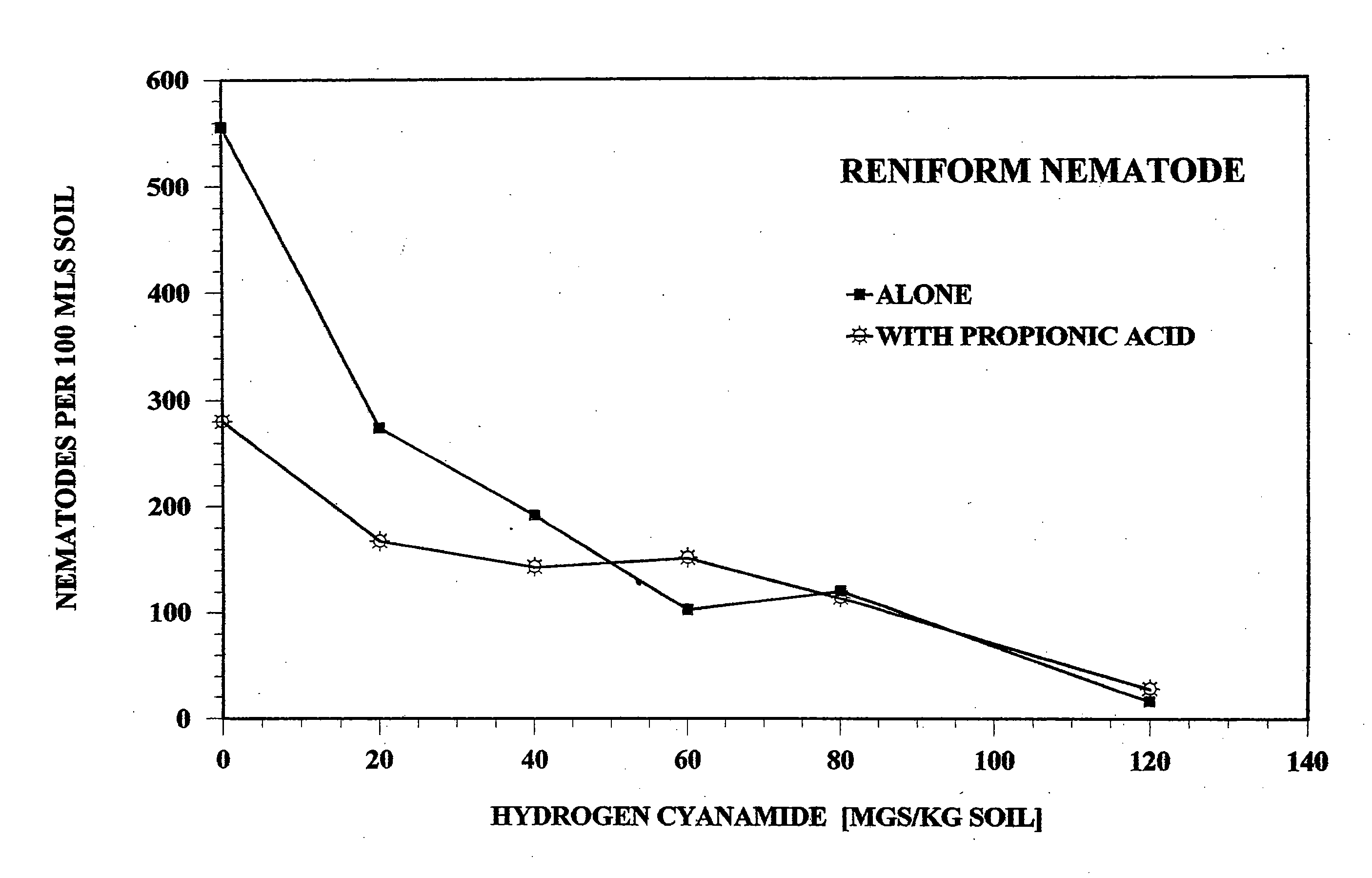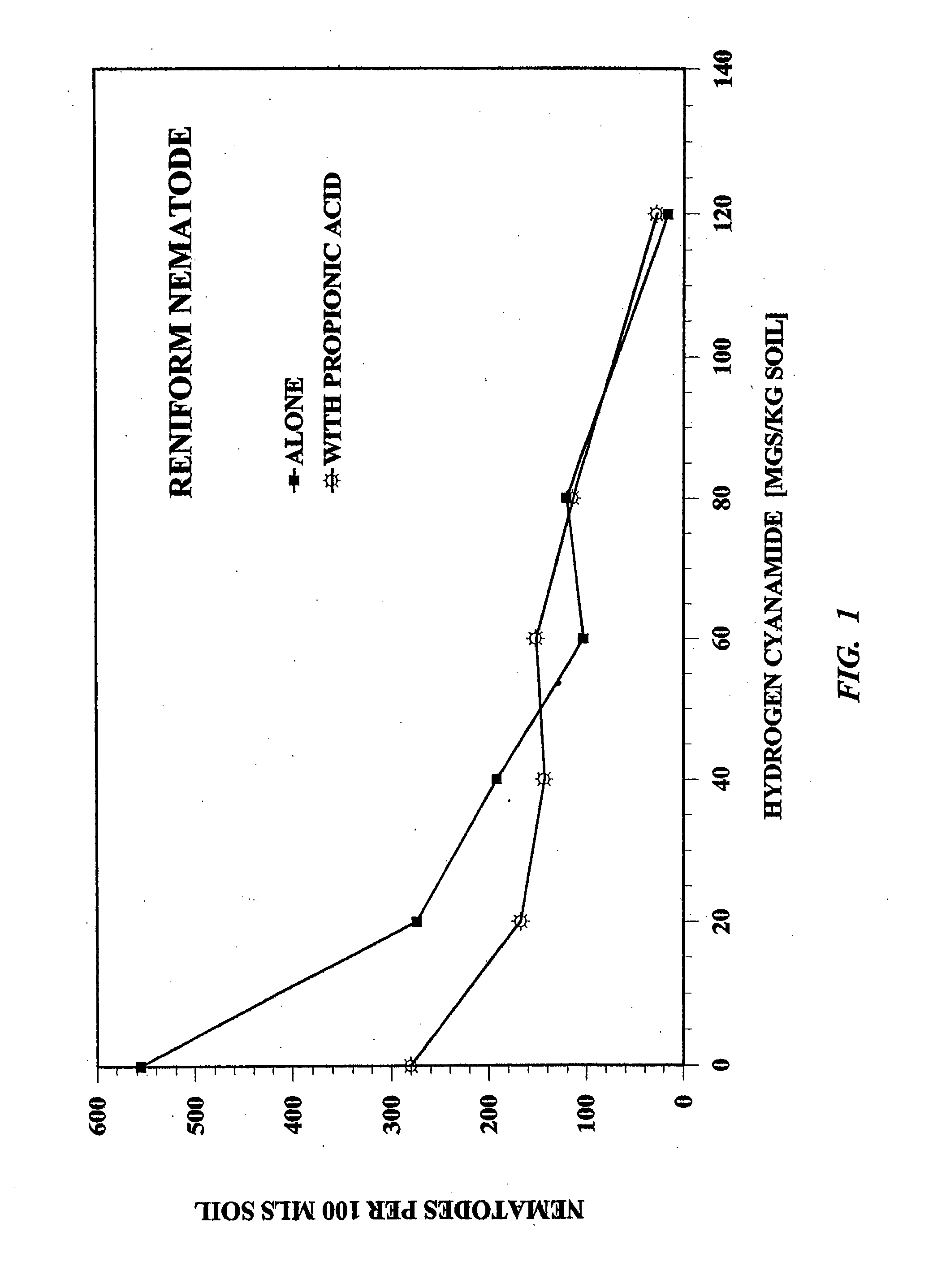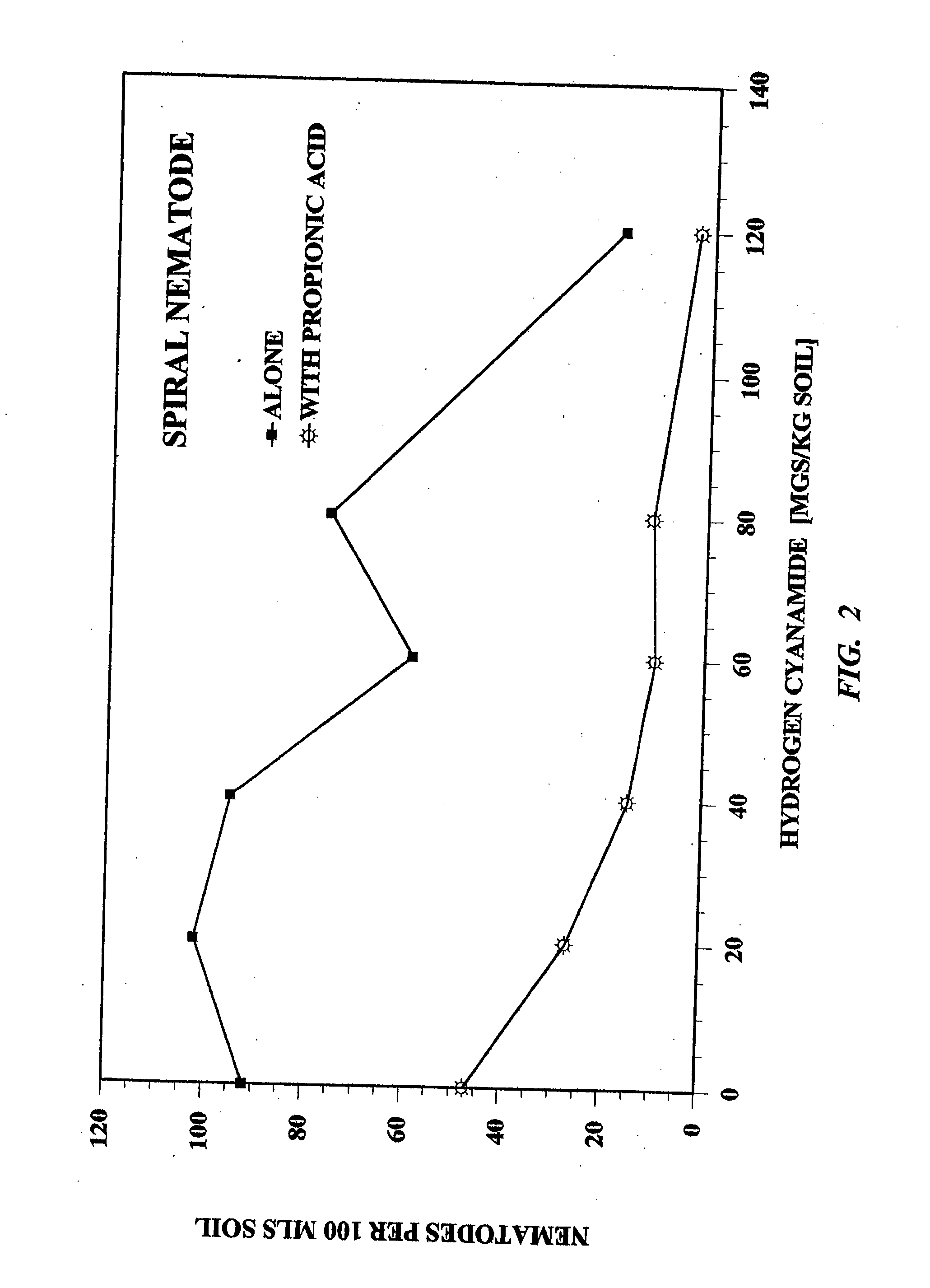Hydrogen cyanamide pesticide formulations
a technology of cyanamide and pesticide formulation, which is applied in the direction of amide active ingredients, biocide, nematocides, etc., can solve the problems of reducing the amount, releasing a significant amount of cyanamide into the atmosphere, and depleting the ozone layer, so as to improve the effect of pesticidal activity
- Summary
- Abstract
- Description
- Claims
- Application Information
AI Technical Summary
Benefits of technology
Problems solved by technology
Method used
Image
Examples
example 1
[0025]This example demonstrates the nematocidal activity of the combined application of hydrogen cyanamide and propionic acid to a silt loam in a covered pot, followed twelve days later by the planting of soybean seeds in the soil. In this study, the soil was naturally infested with four species of nematodes, two of which were deleterious and two beneficial, and observations were made of both the nematode survival and the growth of the soybean plants.
[0026]Stock solutions of hydrogen cyanamide at 1.0% by weight and propionic acid at 5.0% by weight, both in water, were prepared, the hydrogen cyanamide from a phosphate-buffered 50% aqueous solution. Planting pots measuring 10 cm in diameter, each containing 1 kg of soil, were used. The soil was silt loam from a cotton field, pH 6.2, CEC<10 meq / 100 g soil, organic matter<1.0%. The treatment chemicals were combined in various dilutions such that 100 mL of the combined dilutions contained the desired amount of each chemical for each test...
example 2
[0030]This example demonstrates the herbicidal activity of hydrogen cyanamide and propionic acid in combination in pre-emergence application to soil seeded with a series of common weeds germinating in covered pots. The weeds used in these tests were grown from a standard weed seed pack of common annual and perennial weeds representing an extreme weed situation. The weeds included yellow nutsedge (Cyperus esculentus), crabgrass (Digitaria sanguinalis), pigweed (Amaranthus spp.), morning glory (Ipomoea spp.), sicklepod (Sienna obtusifolia) and other annual weeds. Observations of the effects on the weed population as a whole were made, and individual observations were made for yellow nutsedge, crabgrass, and sicklepod.
[0031]Stock solutions of hydrogen cyanamide at 1.25% by weight and propionic acid at 5.0% by weight, both in water, were prepared, the hydrogen cyanamide from a phosphate-buffered 50% aqueous solution. The sizes of the planting pots, the amount of soil per pot, and the ty...
example 3
[0033]This example demonstrates the herbicidal activity of hydrogen cyanamide and propionic acid in combination in application to soil seeded with the same weed species used in Example 2. The procedures in this example differed from those of Example 2, however, by the use of hydrogen cyanamide crystals free of phosphate ion to prepare the aqueous hydrogen cyanamide solution, by the use of post-emergence application, and by the omission of any covering of the pots during any part of the test. Observations were made for total weed growth, and individual observations were also made for yellow nutsedge, crabgrass, sicklepod, and morning glory.
[0034]Stock solutions of hydrogen cyanamide at 1.25% by weight and propionic acid at 5.0% by weight, both in water, were prepared as before, except that the hydrogen cyanamide solution, as noted above, was prepared by dissolving hydrogen cyanamide crystals in water in the absence of phosphate ion. The sizes of the planting pots, the amount of soil ...
PUM
| Property | Measurement | Unit |
|---|---|---|
| aqueous | aaaaa | aaaaa |
| weight ratio | aaaaa | aaaaa |
| concentration | aaaaa | aaaaa |
Abstract
Description
Claims
Application Information
 Login to View More
Login to View More - R&D
- Intellectual Property
- Life Sciences
- Materials
- Tech Scout
- Unparalleled Data Quality
- Higher Quality Content
- 60% Fewer Hallucinations
Browse by: Latest US Patents, China's latest patents, Technical Efficacy Thesaurus, Application Domain, Technology Topic, Popular Technical Reports.
© 2025 PatSnap. All rights reserved.Legal|Privacy policy|Modern Slavery Act Transparency Statement|Sitemap|About US| Contact US: help@patsnap.com



